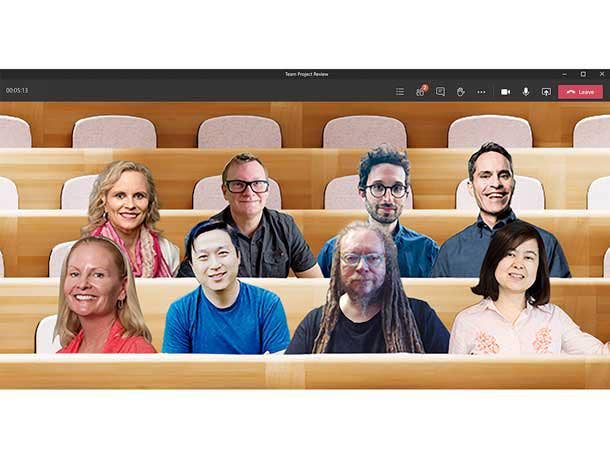Why Microsoft Teams 'Together Mode' Has Major Potential For Changing Collaboration
Using the Together Mode technology with a "VR – HoloLens type device would be the next steps in my mind," one solution provider executive told CRN.

Microsoft is seeking to make the latest feature addition to the Teams app, Together Mode, into the next big game-changer for video collaboration.
Redmond, Wash.-based Microsoft said it aims to make video meetings far more engaging and less fatigue-generating with the feature.
[Related: Microsoft Teams Video Calls Expanding To 49 Visible Participants]
Together Mode, which is made possible by AI segmentation technology, places participants in a video meeting into a shared virtual background. The idea is to make participants feel more like they're sitting together in the same room, Microsoft said.
"It's a very interesting feature – a great way to have meeting-goers feel some togetherness," said Michael Goldstein, president and CEO of LAN Infotech, a Microsoft partner in Fort Lauderdale, Fla. "The individualism [of different backgrounds] really reminds users how separated we are in these meetings. Way to go Microsoft – this helps re-promote the 'team' feeling."
There is also the potential to evolve the technology to be even more engaging in the future, Goldstein noted.
Using the Together Mode technology with a "VR – HoloLens type device would be the next steps in my mind. That would be very cool,” Goldstein said. Microsoft is the developer of the HoloLens mixed-reality headsets, including last year's HoloLens 2.
Robby Hill, CEO of HillSouth, a Florence, S.C.-based Microsoft partner, agreed that the feature looks "really cool" and could benefit business clients.
"The general business community may find it helpful when having virtual town hall events and larger meetings, as it will help to facilitate a better sense of togetherness," Hill said.
Meanwhile, "I see a huge interest in this within higher education and K-12 education as it will help them tremendously, should there be days and times ahead where in-person education isn’t possible," Hill said.
"Overall I am proud that Microsoft is unleashing a rapid pace of innovation with the Teams product and the rest of Office 365, as it shows their commitment to delivering more productivity tools for an increasingly on-the-go workforce," Hill said.
Together Mode was unveiled Wednesday and was among a number of new features coming to Teams--- which has surged in popularity in recent months amid the shift to remote work.
The first shared background to launch for Together Mode will be an auditorium. Teams will get additional shared backgrounds in the future such as a conference room, cafe or classroom, Microsoft said.
Together Mode is an improvement because it lets users focus on the body language and faces of other users, according to Microsoft. That makes it easier to catch nonverbal cues, the company said.
While admittedly not appropriate for all meetings, Together Mode should be ideal for meetings "in which multiple people will speak, such as brainstorms or roundtable discussions, because it makes it easier for participants to understand who is talking," Microsoft said in a blog post.
Together Mode with the auditorium background will roll out to users starting now, with general availability in August.
Teams--which is included as part of Office 365 and Microsoft 365 subscriptions--will also see other updates for video meetings and personal productivity, Microsoft announced Wednesday.
For instance, with the Dynamic View feature, users will get more control over how other participants and shared content are displayed. Meanwhile, a new app within Teams, the tasks app, is launching this month to offer users a unified view of their tasks across different apps.
Microsoft did not provide an update on the growth of the Teams user base. Microsoft last disclosed, in late April, that Teams had surpassed 75 million daily active users — up from 32 million daily active users as of March 11.